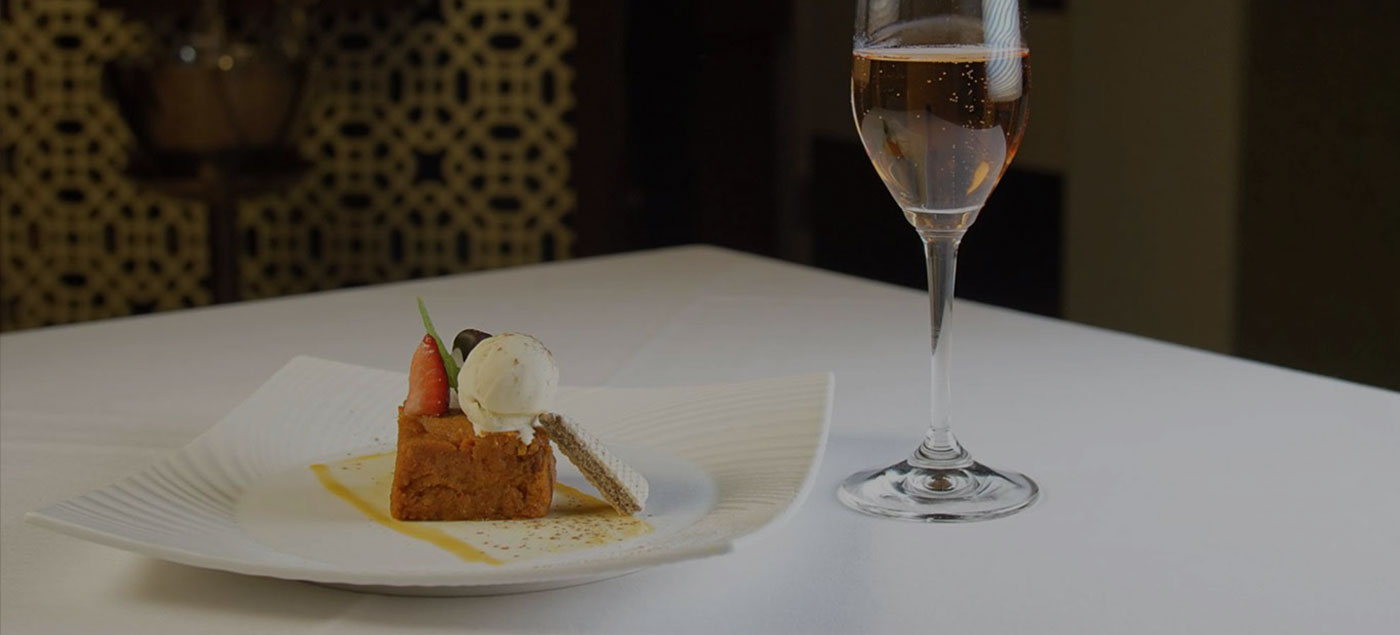- 234 Court St Brooklyn
New York 11201 - (347) 689-3882
- info@indiantableny.com
Copyright © INDIAN TABLE 2025 All rights reserved
At Indian Table, chef Eric McCarthy turns the spotlight on Goan cuisine
Of the dozen or so regional cuisines of India available in New York City, the one that best showcases its international roots is from Goa. Yet, apart from the ubiquitous vindaloo, Goan food hasn’t been easy to come by here (with Cardamom in Sunnyside, Queens, being the rare exception).
The family of our most famous Indian chef, the late Floyd Cardoz, came from Goa, though he featured the food of his native state only occasionally. Now, another Goan chef has appeared, who focuses more on this fascinating cuisine. Eric McCarthy was born in the Indian state and arrived in New York in 2001, after a long career cooking in India and on cruise ships. Here, he worked at Tamarind, Tulsi, and Brick Lane Curry House — where he introduced the restaurant’s phaal, which is said to be the city’s spiciest curry.
A black facade with block white lettering down a few steps. Indian Table, in a walk-down storefront in Cobble Hill. Six months ago, McCarthy took over Indian Table on Court Street in Cobble Hill, a rather nondescript name for a wonderful restaurant. Down a few steps from the sidewalk, the dining room is dark and deep, boasting ornate geometric tiles, exposed beams, dangling brass light fixtures, and a teal-blue color scheme. There’s something ship-like about it, and McCarthy can be seen moving around in his chef’s whites through swinging doors that lead to the kitchen.
The first dish to hit the table is a novelty in an Indian restaurant: Caldo verde ($8). The name refers to the Portuguese national soup, here reinterpreted in a distinctively Goan way. Instead of coarse kale leaves and pork sausage slices in a Knorr-ish broth, it comes with a masala-laced spinach puree that renders the soup a mossy shade of green and sweetly pungent. Ship’s biscuits — a staple of shipboard cuisine — float on top of this vegetarian version, as if just crumbled on a frigate’s rolling deck.
Other satisfying appetizers abound — some from Goa, others from nearby regions or invented by the chef. Coconut shrimp ($12) features five behemoth beauties cooked neither mushy nor hard and coated with a chunky white glaze tasting of coconut, tamarind, and black mustard seed. Also for shrimp lovers, there’s an entree called Goan shrimp curry ($22) that adds the stronger flavors of cumin, ginger, and mangosteen to the mix, the latter an astringent purple fruit native to Southeast Asia that has become a cornerstone of southern India’s agriculture.
The small western coastal state with an area of 1,429 square miles and population of 1.8 million has become known as a beach resort in modern times; but Goa was a Portuguese colony for 451 years, ending after a brief military action in 1961. Over the centuries, the port welcomed foodstuffs from all over the world, including such important non-native ingredients as chiles, tomatoes, tamarind, and potatoes, without which modern Indian food is nearly inconceivable.
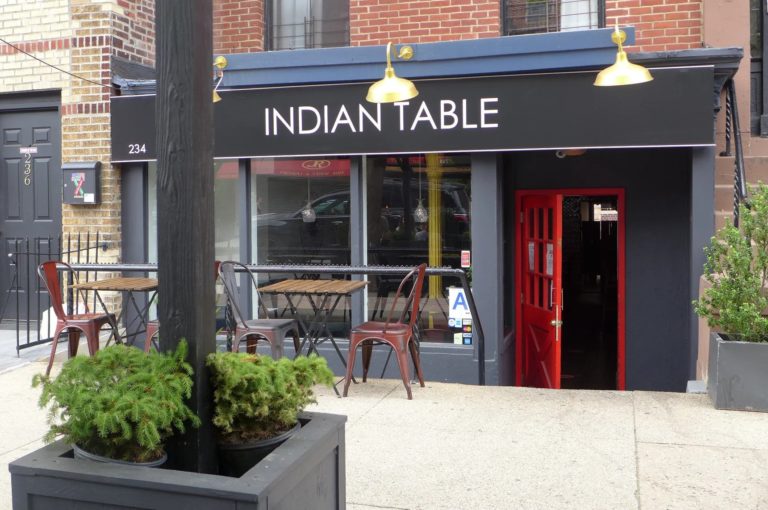
Indian Table, in a walk-down storefront in Cobble Hill.
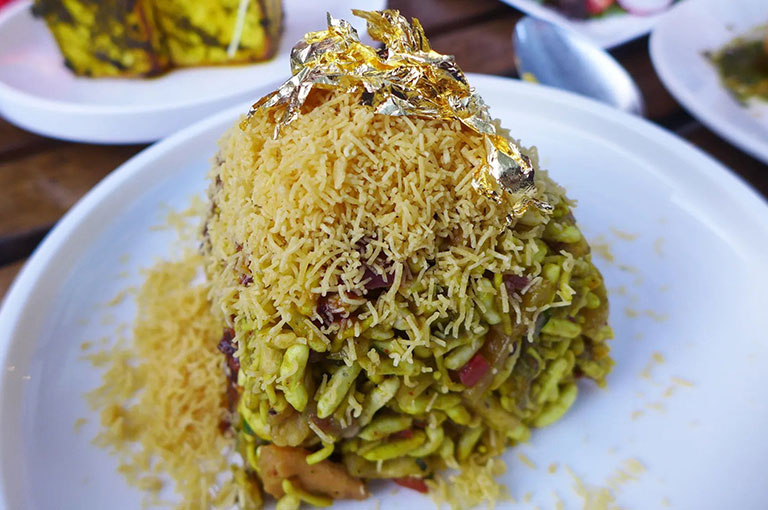
Golden bhel arrives topped with gold foil — yes it’s really gold.
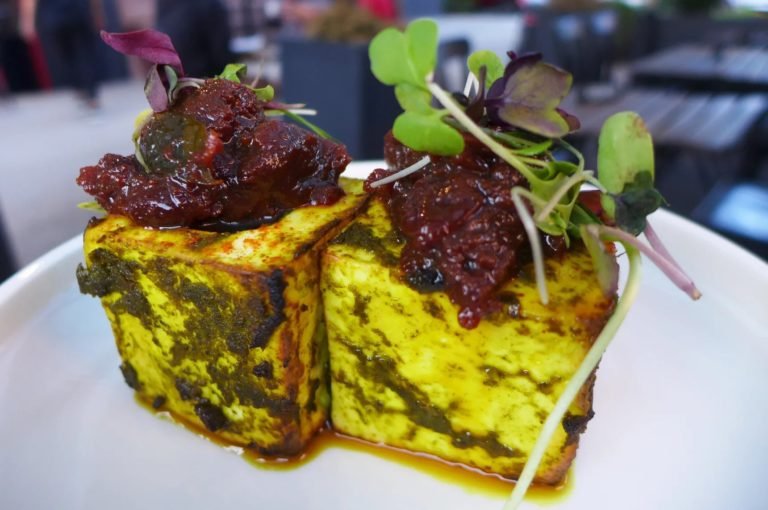
Tulsi paneer features compressed fresh cheese.
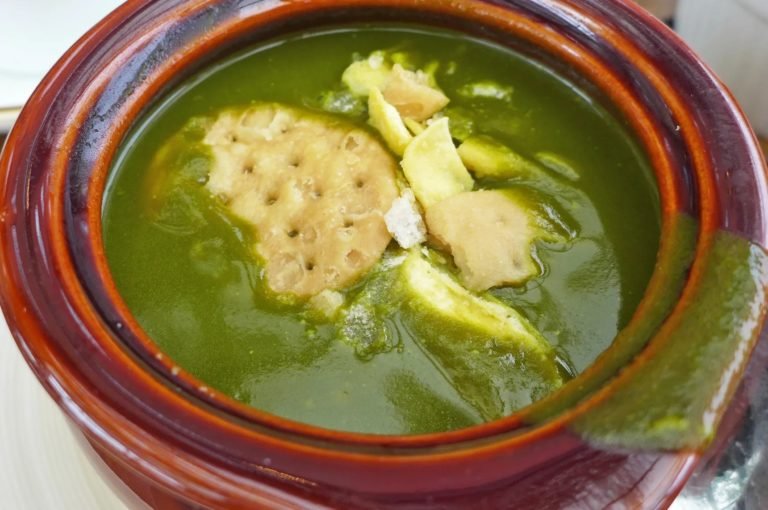
Caldo verde is a vegetarian spinach soup.
Among the far-ranging collection of 14 soups and apps, there are a couple of chaats from Mumbai. One, golden bhel, is a heap of crunchy fried snacks festively tricked out with gold foil that ripples with the slightest breeze. Basil isn’t an ingredient one normally associates with Indian food, but the herb is featured at Indian Table in its tulsi paneer ($12). Cubes of fantastically compressed fresh cheese — denser than New York cheesecake — are dribbled with a sauce of basil and cranberry, showing off the chef’s deft assortment of globe-spanning flavors.
But occasionally, some of his wilder experiments go awry such as the tower of beets called Kashmiri tikki. The greenish ricotta-thickened sauce that cascades over the sides tastes of apricot, fennel, and tomatillo, and the combination doesn’t quite work. By contrast, McCarthy’s take on goat biryani ($20) is a resounding success. Rather than using the southern model for the dish associated with Hyderabad, he travels to Lucknow in the north, and reproduces the biryani with a pastry crust, as popularized by Adda. But while the crust in that version is thin and cracker-like, at Indian Table it’s more like a naan, which absorbs the flavors of the casserole and can be torn apart, folded up, and used to scoop up mouthfuls of the biryani.
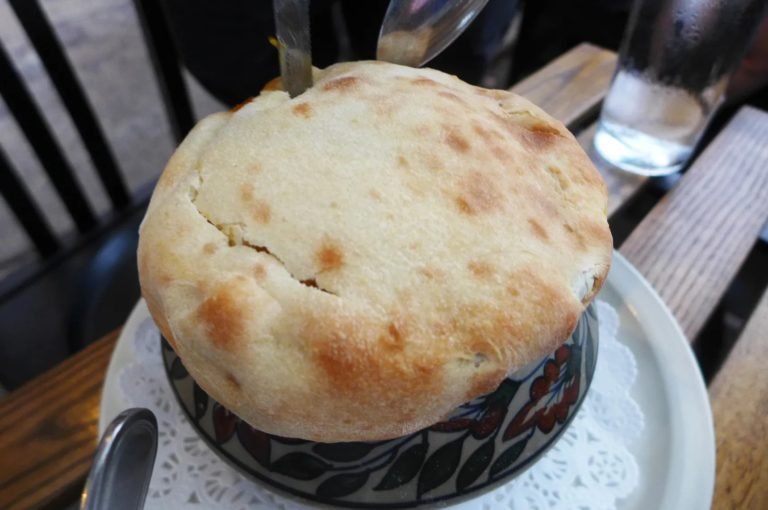
Indian Table’s epic goat biryani.
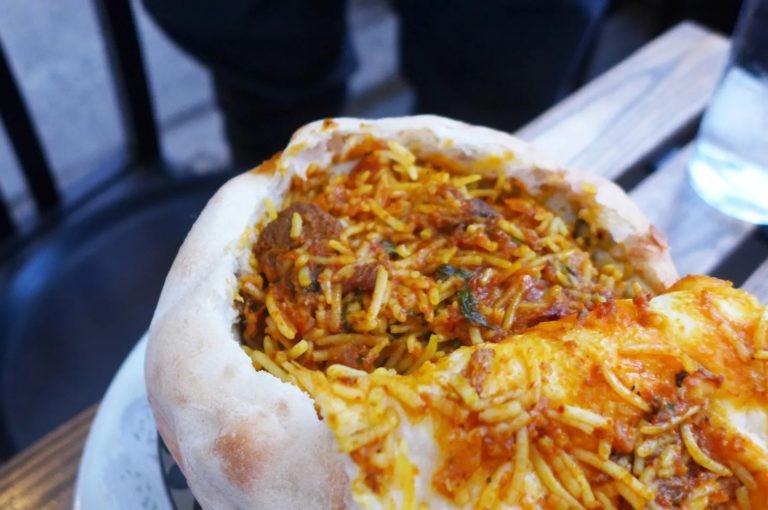
Use the crust to scoop up bites of biryani.
The goat is more profuse and highly spiced than usual. My friends and I agreed McCarthy’s is the best goat biryani in town. There are knockout curries, too, including a chicken chettinad associated with Chennai (was known as Madras). Rendered a lovely shade of beige, both black pepper and dried red chiles make it punishingly spicy, a reputation the dish enjoys back in India. Meanwhile, the Goan chicken vindaloo is less spicy. Inspired by a Portuguese original called carne de vinha d’alhos, in which meat or poultry is poached in red wine and garlic, the chef laces his stew with feni, a traditional Goan liqueur made from the cashew fruit native to Brazil.
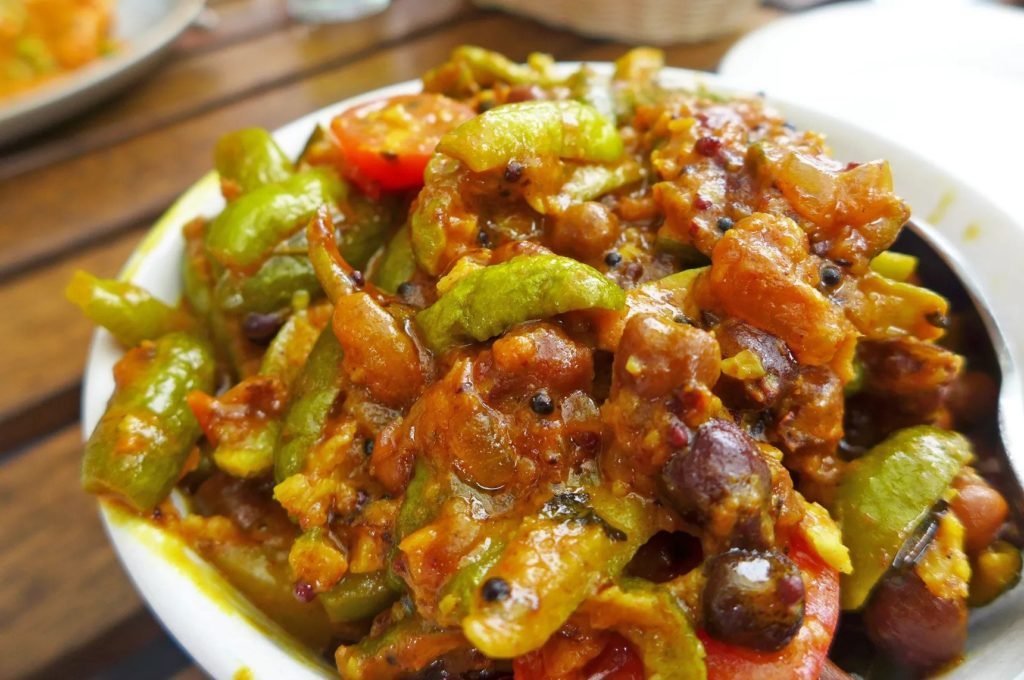
Mustard parval chole, a vegetarian curry featuring black chick peas and mustard oil.
There are a couple of great vegetarian curries, including avial, a dish popular in Kerala and Tamil Nadu that deposits a stunning array of vegetables in a sweet coconut gravy. McCarthy works at keeping the assortment of vegetables Indian, and thus uses drumstick, a vegetable you might not have encountered. Looking like celery but related to thistles, it wraps soft flesh like an artichoke heart around coarse fibers, and must be eaten by raking the soft parts off with your teeth before discarding the fibers. It’s a fun dish to eat, but you do have to dig the vegetable out of the gravy.
Ultimately, I find that an Indian restaurant lives and dies based on the excellence of its breads. Sure, Indian Table offers the Deep South favorite lacha paratha, based on a compressed puff pastry with a buttery finish. But even more interesting is bacon naan ($6), featuring little pockets of crumbled bacon in a puffy and yeasty dough. As you tweeze up the last morsels of bacon fallen onto the plate, you’ll wonder: How did this unusual flatbread come to be?

